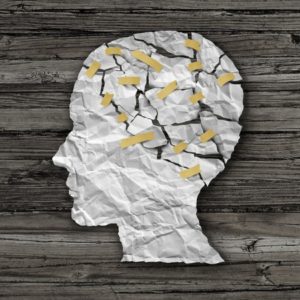
A psychiatric resident at Stanford University School of Medicine wrote an essay on the crisis with psychiatry that appeared in a Scientific American blog. The author said the field was in decline as fewer medical students sought to specialize in psychiatry. He stated psychiatry was looked down upon by nearly every segment of society; and patients avoided treatment because of the stigma related to the field. His solution was to change the name of the field—call it something else.
The crisis, in his view, stems largely from a misunderstanding of what psychiatry is. He said it was “the medical field where doctors incorporate neuroscience and medical research to treat patients with diagnosable mental disorders.” But his friends seem to think he interprets dreams and administers Rorschach tests. Administering Rorschach tests and interpreting dreams are activities associated with psychoanalytic practice that dominated psychiatry up until the 1970s. While “mental health” has made great strides raising awareness (i.e., May is now National Mental Health Awareness Month), “psychiatry has been left behind as its anachronistic forebear.” So he asked, “Would renaming the field help?”
The word psychiatry evokes thoughts of dated medical practices, like Freudian analysis and ice-pick lobotomies. Its sordid history turns away patients, providers, and the public from the progress of mental health care today.
He acknowledged where relabeling could be seen as a Band-Aid. A mere name change ignores the root causes of the problem, which from his perspective is the stigma attached to psychiatry and mental illness. However, citing studies of name changes within the U.S. and other countries, he suggested these language shifts helped psychiatry sound more reputable. He imagined most people would rather have a mental health disorder than a psychiatric disorder, “even if it were the same thing.”
“Mental Health Care” would be a simpler name for the field instead of psychiatry. Psychiatrists would then become “mental health physicians.” Medical centers could create departments of mental health, combining specialties such as internal medicine, psychiatry, psychology and social work. “By uniting these fractured disciplines under one roof, clinicians could provide more comprehensive care to patients without the stigma associated with aging terminology.” Mental health units were said by the author to be far less frightening than psychiatric wards.
In conclusion, he noted how the term psychiatry meant: “healing of the psyche,” drawn from the Greek goddess of the soul—Psyche. “It’s a romantic notion, but we don’t treat patients’ souls. We treat diagnosable diseases of the brain. Perhaps it’s time to rename the field.”
In reading this essay, I was reminded of what psychiatrist Jeffrey Lieberman wrote in his book, Shrinks about psychiatry. He commented that in the 1970s, “the majority of psychiatric institutions were clouded by ideology and dubious science,” mired in a pseudomedical Freudian landscape. But now in the twenty-first century, psychiatry offered scientific, humane and effective treatments. “Psychiatry is finally taking its rightful place in the medical community after a long sojourn in the scientific wilderness.” You can read about the fallacies of “Freudian analysis and ice pick lobotomies” in Shrinks, but you won’t hear the complete and unvarnished truth about psychiatry.
Robert Whitaker astutely commented that Shrinks is more of a story of how psychiatry sees itself as an institution, than it is an accurate history of psychiatry. And I see the same approach here. I wonder if the Stanford psychiatric resident who wrote “Maybe We Should Call Psychiatry Something Else” is simply rehashing the received view of psychiatric history.
If you want a truly unvarnished look at psychiatry, read Whitaker: Mad in America, Anatomy of an Epidemic, and Psychiatry Under the Influence. You can read more about Lieberman and Shrinks on this website. Do a search for “Lieberman.”
The term “psychiatry” was originally coined by Johann Reil—a German physician—in 1808. And it does literally mean the medical treatment of the soul. Another German physician, Johann Heinroth was the first person to hold a chair of psychiatry. He also staked out working with the mentally ill as medical territory. Since there was little or no knowledge within the medical tradition to equip doctors to deal with mental disturbances, he proposed the creation of a new branch of medicine—psychiatry.
In his 1818 Textbook of Mental Disturbances, Heinroth said: “Since we are speaking of medical art and science, we should think that nobody but a doctor should have a right to make mental disturbance the object of his studies and treatment.” In The Myth of Psychotherapy, Thomas Szasz said of this time:
The birth of psychiatry occurs when the study of the human soul is transferred from religion to medicine, when the “cure of souls” becomes the “treatment of mental diseases,” and, most importantly, when the repression of the heretic-madman ceases to be within the jurisdiction of the priest and becomes the province of the psychiatrist.
There have been some radical shifts in how psychiatrists function since the early 1800s. Initially they were administrators of large institutions for the insane. Under Freud’s influence, psychiatrists began to consult with individuals living in society rather than working solely with those within institutions. Then in 1909, Freud was invited to give a series of lectures on psychoanalysis by Stanley Hall, the president of Clark University.
The cover photo for “Maybe We Should Call Psychiatry Something Else” shows seven men from the time of that conference, but only identified Sigmund Freud and Carl Jung. At the time, Jung was still friendly with Freud. The photo credit said the others were “pioneers in psychiatry,” but that is not entirely accurate. The photo shows Sigmund Freud and Carl Jung on either side of Stanley Hall in the front row. In the back row from left to right are Abraham Brill, Ernest Jones and Sandor Ferenczi.
Stanley Hall was a well-known American psychologist in addition to the then president of Clark University. He had an interest in Freud’s psychoanalytic theories and invited him to be part of a “galaxy of intellectual talent” to celebrate the twentieth anniversary of the founding of Clark University. Jung and Ferenczi were invited as the leading European disciples of Freud. Ernest Jones, another protégé of Freud, was then in Toronto Canada, building a private psychoanalytic practice and teaching at the University of Toronto. Jones would later become a biographer of Freud. Brill was the first psychoanalyst to practice in the U.S. and the first translator of Freud into English. In 1911 he founded the New York Psychoanalytic Society.
So these individuals are better seen as pioneers of Freudian psychoanalytic practice —the approach dismissed by the author of “Maybe We Should Call Psychiatry Something Else” as a dated medical practice, which he placed alongside ice pick lobotomies.
By the 1940s, psychoanalytic theory had not only taken over American psychiatry, it had become part of our cultural psyche. Alfred Hitchcock’s 1945 film, Spellbound is an example of how influential psychoanalytic thinking was. The opening credits of the film announce that it wanted to highlight the virtues of psychoanalysis in banishing mental illness and restoring reason. Look for the Freud look-a-like character as Ingrid Bergman’s psychoanalyst and mentor.
Psychoanalytic thought dominated the field until the 1970s when the birth of biological psychiatry was ushered in by Robert Spitzer and his reformulation of psychiatric diagnosis. After Spitzer was appointed to do the revisions for the 3rd edition of the DSM in 1974, he was able to appoint whomever he wanted to the committees. He made himself the chair of all 25 committees and appointed individuals who he referred to as the “young mavericks” psychiatry. In other words, they weren’t interested in Freudian analysis. Spitzer said: “The feeling was that the same techniques that were useful in medicine, which is you describe something, you do laboratory studies; that those same kind of studies were appropriate for psychiatry.” Except it didn’t happen because in the 1970s, there just wasn’t a lot of psychiatric research. So the decisions of the committees were based on the expertise of the committee members.
David Chaffer was part of the process back then. He said committee members would gather together into a small room. Spitzer would sit with a mid 1970s “portable” computer and raise a provocative question. “And people would shout out their opinions from all sides of the room. And whoever shouted loudest tended to be heard. My own impression was … it was more like a tobacco auction than a sort of conference.” So much for using the same techniques as those used in medicine. Listen to the NPR story, “The Man Behind Psychiatry’s Diagnostic Manual” for the above information on Spitzer and the DSM.
But the real driving force behind the revisions made by Spitzer and others was because a “psychopharmacological revolution” couldn’t begin with the diagnostic process that existed before Spitzer and the DSM-III. Allen Frances, the chair of the next revision, the DSM-IV, acknowledged as much in his comments before the American College of Neuropsychopharmacology in 2000. Frances said the DSM-III was an innovative system that focused on descriptive diagnosis and provided explicit diagnostic criteria. “In many ways this aided, and was aided by, the knowledge derived from psychopharmacology. . . . The diagnostic system and psychopharmacology will continue to mature with one another.”
The psychopharmacological revolution required that there be a method of more systematic and reliable psychiatric diagnosis. This provided the major impetus for the development of the structured assessments and the research diagnostic criteria that were the immediate forerunners of DSM-III. In turn, the availability of well-defined psychiatric diagnoses stimulated the development of specific treatments and increasingly sophisticated psychopharmacological studies.
In the Foreword to his book, The Anatomy of an Epidemic, Robert Whitaker explained how he first wandered into the “minefield” of psychiatry by writing in the mid 1990s about research practices such as rapidly tapering schizophrenic patients off of their antipsychotic medications and then giving them a drug to exacerbate their symptoms. This “research” was done in the name of studying the biology of psychosis. Jeffery Lieberman took part in some of those studies, using methylphenidate (Ritalin, Concerta) to deliberately provoke psychotic symptoms in schizophrenic patients. Read “Psychiatry, Diagnose Thyself! Part 2” for more information on Whitaker’s articles and Lieberman. Incidentally, the series of articles Whitaker co-wrote for the Boston Globe was a finalist for the Pulitzer Prize for Public Service. Whitaker said in the Foreword to Anatomy of an Epidemic:
I began this long intellectual journey as a believer in the conventional wisdom. I believed that psychiatric researchers were discovering drugs that helped “balance” brain chemistry. These medications were like “insulin for diabetes.” I believed that to be true because that is what I had been told by psychiatrists while writing for newspapers. But then I tumbled upon the Harvard study and the WHO findings, and that set me off on an intellectual quest that ultimately grew into this book, The Anatomy of an Epidemic.
Maybe there is a stigma against psychiatry for more than just the past use of ice pick lobotomies or insulin comas or ice baths or the electroshock treatment shown in One Flew Over the Cuckoo’s Nest. But simply changing the name of what we now call psychiatry will not change the opposition against a medical specialty that no longer treats patients’ souls. And perhaps that is really why the field is in decline.





